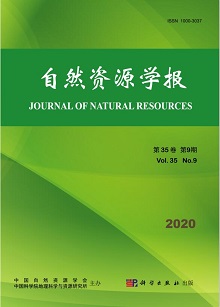Regular Articles
LIU Chun-fang, WANG Wei-ting, LIU Li-cheng, LI Peng-jie
As the source of human welfare, the spatial distribution characteristics and matching status of ecosystem service supply and demand can reflect the spatial allocation of regional environmental resources. Analyzing the matching relationship between supply and demand is an important prerequisite for evaluating and optimizing the management of ecosystem services and promoting the balance between supply and demand of ecosystem services. Taking Gulang county located in the Hexi Corridor as an example, this paper uses multi-source data such as meteorological observation, land use, and statistical yearbooks to evaluate the supply and demand of four ecosystem services including water supply, carbon sequestration, food supply and soil conservation, based on InVEST model and ArcGIS method. Result shows that: (1) The total supply and demand of ecosystem services in this county indicate that supply exceeds demand, and there are obvious differences among different types of ecosystem services. Besides, the total difference between supply and demand water for supply, carbon sequestration, food supply, and soil conservation is 12.45×108 m3, 21.55×107 t, 3.8×107 t, and 1.28×107 t, respectively. (2) Based on the township unit, the supply and demand matching of various ecosystem services in the study area are presented as four types (high supply and high demand, low supply and high demand, low supply and low demand, and high supply and low demand), and the matching patterns between regions and ecosystem services have obvious spatial heterogeneity. (3) The four matching types generally show the hierarchical division of the south, the middle and the north, and present the centralized and continuous patterns, which indicates that the towns with the same matching types are characterized by "adjacent similarity". Based on the analysis of the supply, demand and matching status of ecosystem services, this paper puts forward the optimization countermeasures of eco-economic development, urbanization construction, sustainable ecological management and land spatial planning under different matching types.
